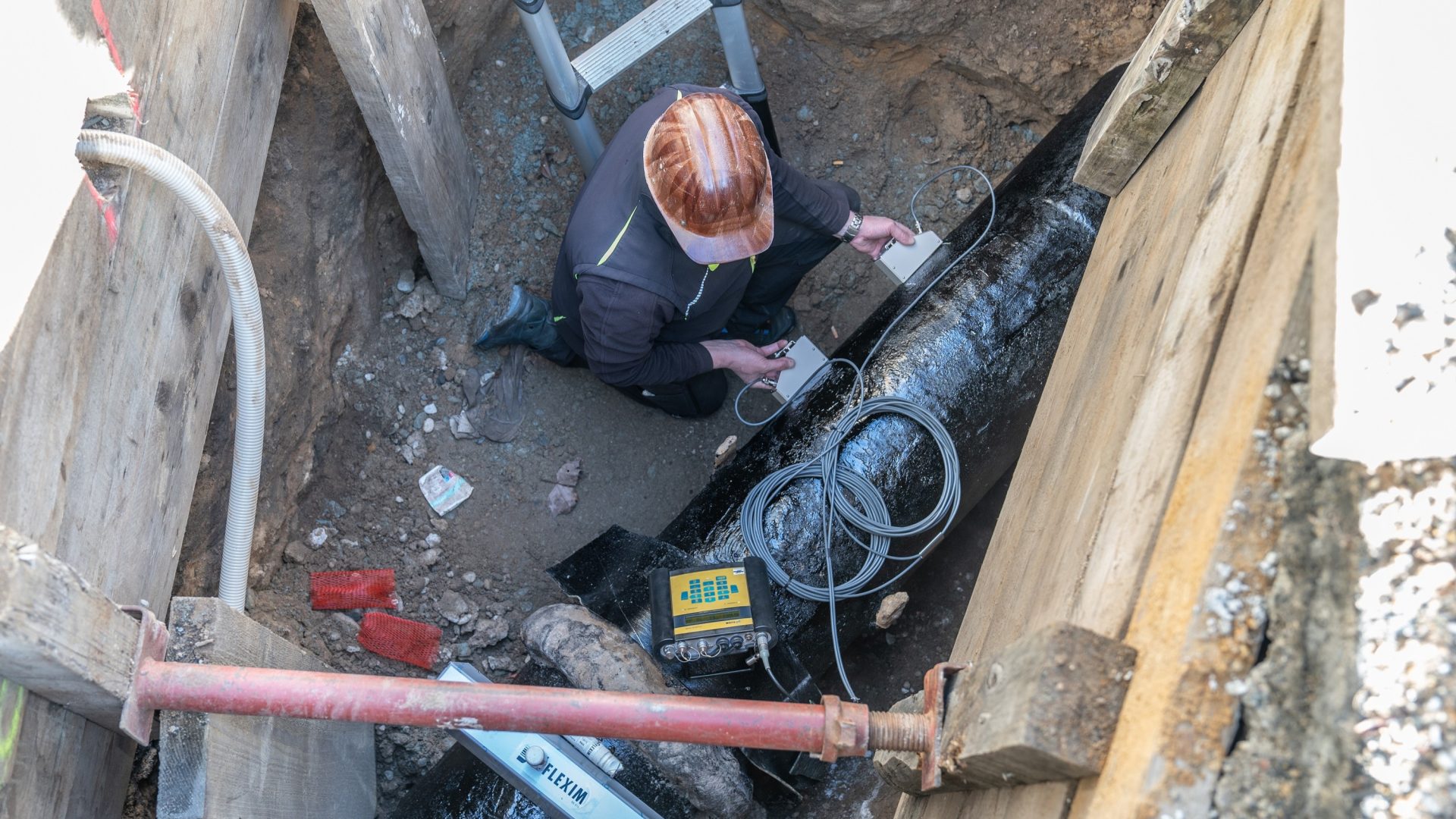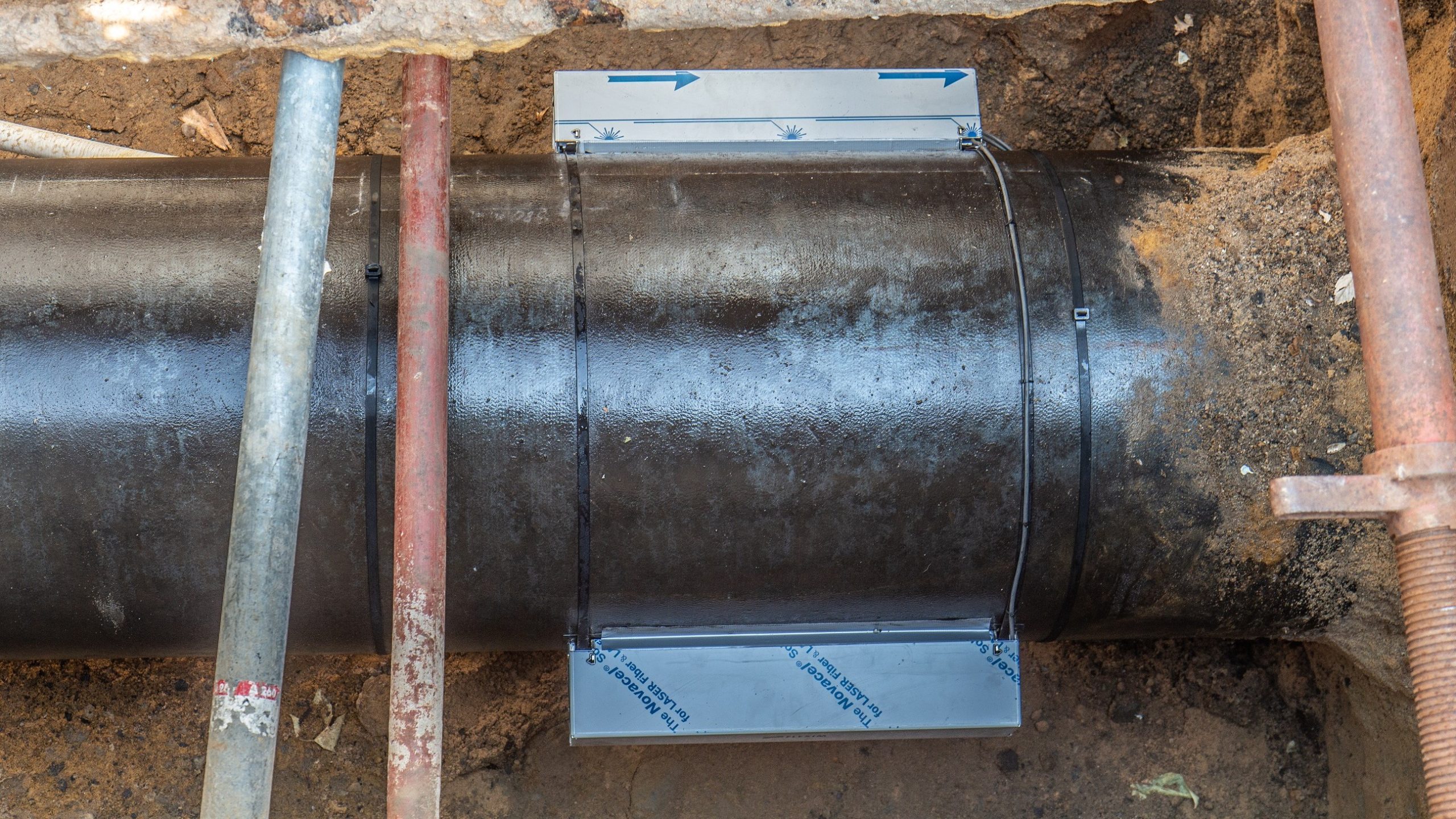Able to monitor water networks instantaneously, without the need for costly shutdowns or modifications to the pipeline, non-invasive clamp-on ultrasonic flowmeters are reliably measuring flow rates and detecting leaks in water networks around the world.
Ultrasonic sensors are robustly attached to the outside of the pipe, and sound waves measure the velocity of the fluid inside. When regularly observing and comparing the minimum consumptions at night, increasing flow rates indicate potential leaks. This allows these leaks to be located and repaired quickly, reducing water loss and minimising the risk of damage to the pipeline.
Another advantage of clamp-on ultrasonic technology is that it can be used to optimise the flow of water through the network. Because engineers are able to identify areas where the flow rate is too low or too high, it can be adjusted by opening or closing valves, therefore improving the efficiency of the network and reducing energy costs.
Flow measurement at over 200 underground measuring points in a drinking water network
Preventing and reducing water loss has always been an economic necessity for water companies. But with the growing challenges presented by climate change, the efficient use of this vital commodity is becoming ever more pressing.
A prosperous economic area in the heart of Europe, Frankfurt’s water supply has to cope with many demands in terms of both drinking water supply and consumption. The high density of jobs in the city, as well as the airport, hotels, universities, hospitals and industrial companies all add to the increased water supply requirements.
Clamp-on ultrasonic system for non-invasive flow measurement
With a keen awareness of the need to reduce water loss, the network operator of the Frankfurt energy and water supplier tasked FLEXIM with clamp-on measurement as part of their “Water network monitoring through the creation and permanent operation of flow measurements“ project, as setting up a flow measuring point in the drinking water supply network with this system would avoid the kind of considerable disruption and cost involved in the installation of a traditional wetted flowmeter, which inevitably includes inconvenient civil engineering work. Clamp-on ultrasonic transducers are simply clamped to the outside of the pipe, and do not affect the supply or risk any kind of contamination. And because the transducers used have protection class IP68, they can also be permanently operated in buried locations where ground water could submerge them (or in flooded chambers).
Underground flow measurement without chamber construction
Because non-invasive measurement doesn’t suffer any wear and tear, there’s no maintenance involved. And thanks to a consistently robust design, flow measurement points can be set up directly in the ground – entirely omitting the time-consuming process of constructing a chamber. This not only reduces the installation effort but also significantly reduces the disruption to road traffic caused by lengthy civil engineering work. With the pipeline remaining completely intact, subsequent flushing and leak testing are also unnecessary.
The greatest losses in a drinking water supply network are not caused by large burst pipes, which are noticed immediately and therefore quickly repaired, but by small leaks over a long time. These gradual losses can best be detected by recording the minimum night-time flow rates in the smallest possible network areas. If changes in the minimum flow rates are observed here, a leak can be concluded. This can then be tracked down and localised with leak detection systems.
Leakage monitoring places high demands on the flow measurement technology used, especially with regard to measurement dynamics and accuracy, with the inertia-free acoustic measuring method being highly sensitive to even the smallest currents. Thanks to the careful pairing of the transducers in the factory and the storage of the calibration data on an integrated chip, flow measurement with ultrasonic clamp-on flowmeters does not require a zero-point calibration.
Hydrological insights
The benefits of flow measurement go much further than just leak detection and creation of a water balance – being able to actually see the flow reveals processes in the water network that may not have been previously known about, from processes at the upstream network operator to hydrological abnormalities in the distribution network, along with unusual consumption behaviour by customers.
Thanks to the installed flow measurements, the water network operator now has empirical data available which can, in future, be recalibrated with the computer network model. This in turn facilitates the needs-based design of the network and optimises operational management.




